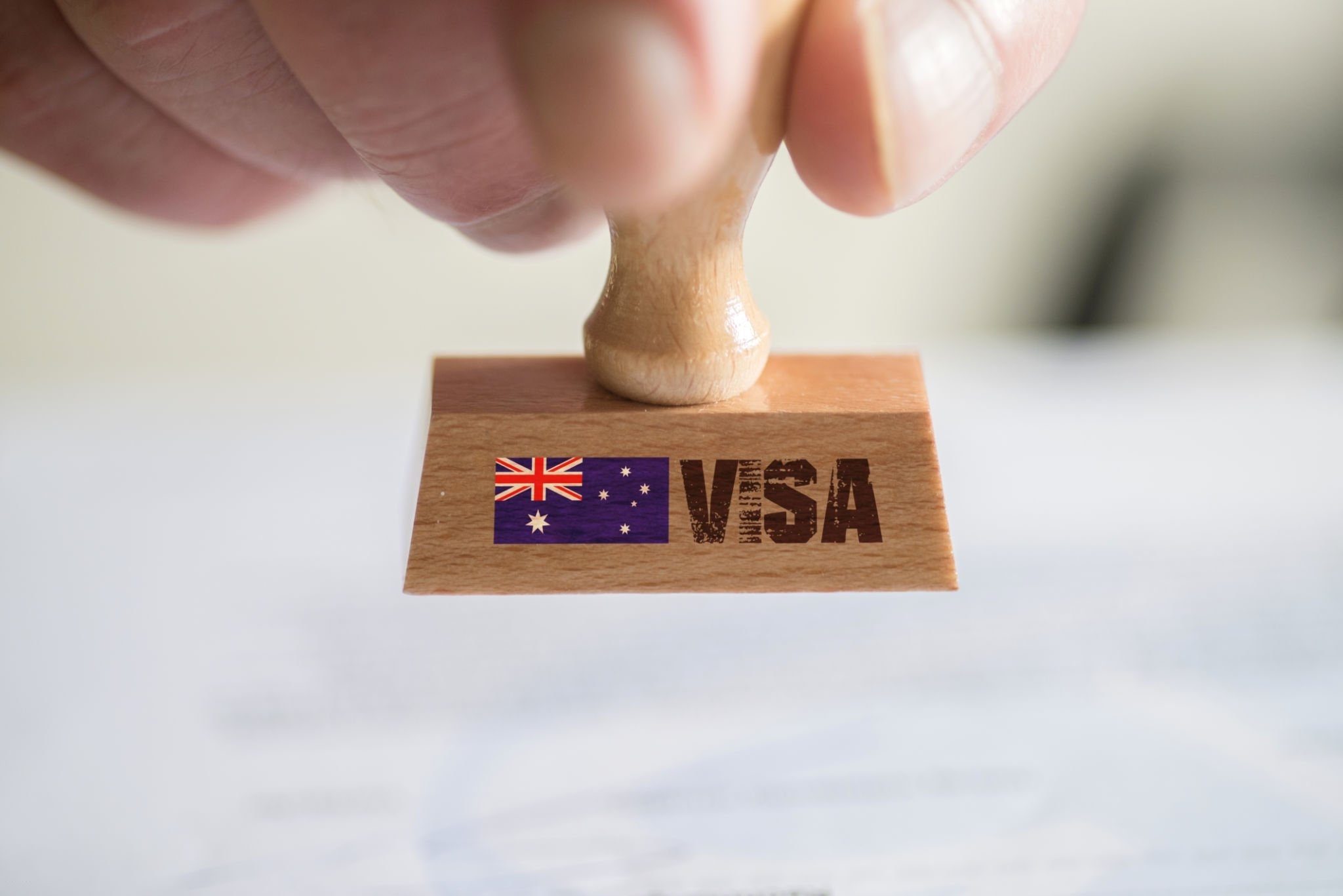Warmest Places in Canada. When people think of winter in Canada, the first thing that comes to mind is cold. Although chilly Canadian winters can be enjoyable (consider skating on frozen lakes, ski-boarding down the snowy mountains, and taking in the Northern Lights dance in the winter sky), many aren’t willing to endure the cold conditions of the Great White North.
If you’re looking to travel to Canada during the winter months but prefer areas with mild winters – and yes, they exist, this list is perfect for you.
A definite theme runs through these destinations: most of them are in the westernmost province of Canada, British Columbia. Even though BC is one of the most popular ski resorts worldwide, many coastal communities enjoy milder temperatures and warmer climates. You’ll find out that some cities in Canada’s other provinces are more generous than others – a handful that might surprise you! Warmest Places in Canada.
you might also interested in: How to Immigrate to Canada
The locations listed aren’t just the warmest destinations; they’re also exciting cities and towns where visitors are likely to want to stay for a long time, perhaps for the entire winter. Find the top places to go this cold time of the year by checking out our list of the warmest places in Canada during winter.
Warmest Places in Canada:
1. Victoria, British Columbia
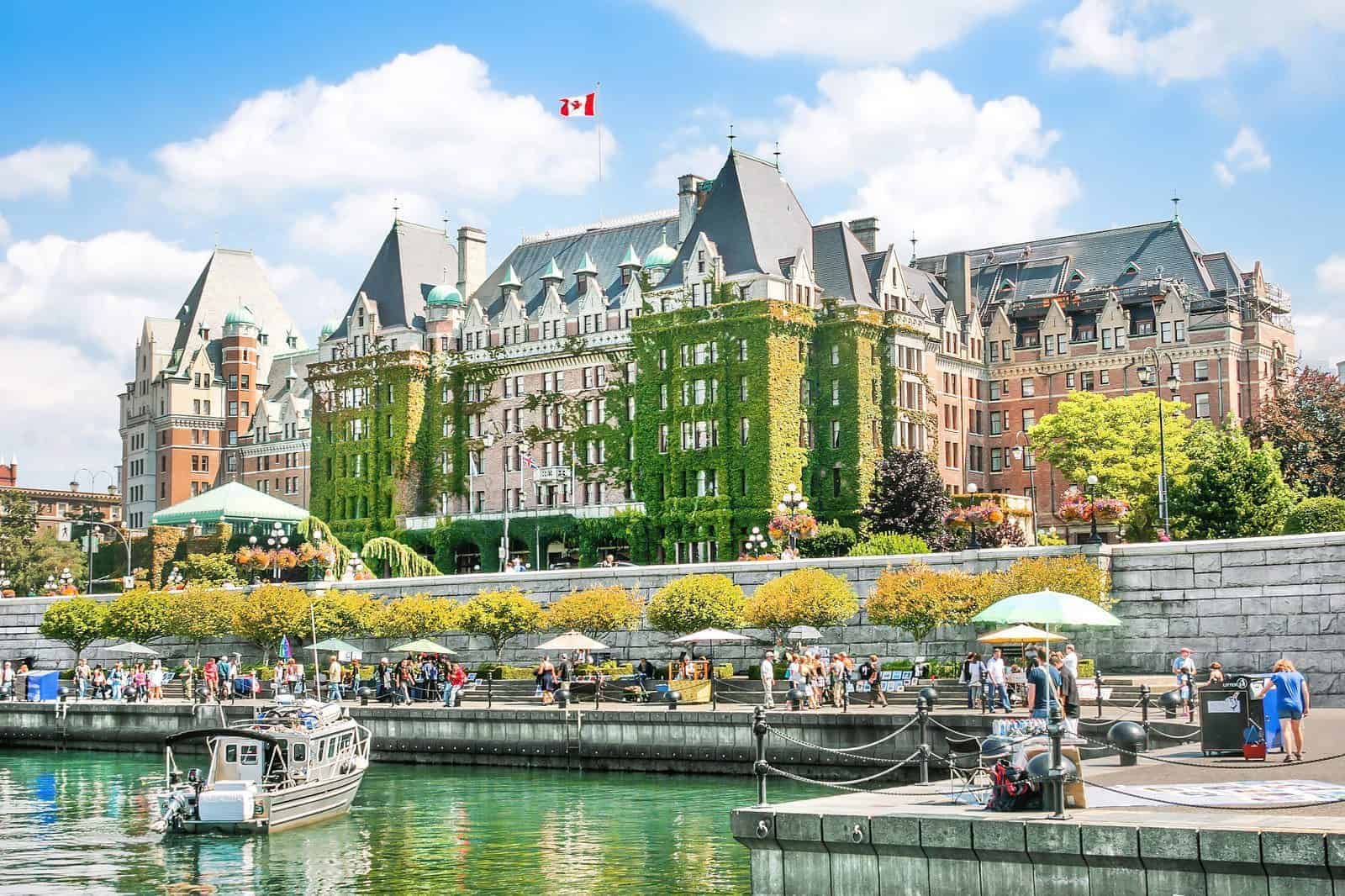 Victoria’s Inner Harbour in April | Photo Copyright: Lana Law
Victoria’s Inner Harbour in April | Photo Copyright: Lana Law
Victoria is the capital city of British Columbia – it has the unique distinction of being Canada’s most warm city. Victoria has the highest average temperature in the whole nation, with an average temperature for a daily peak that is 7.6 inches Celsius (45.7 degrees Fahrenheit) and an average lower temperature that is 1.5 to 1.5 Celsius (34.7 degrees Fahrenheit) in January, which is the most extreme temperature of Canadian winter.
There’s a reason so many moves to Victoria, as well as other stunning locations on Vancouver Island: the beautifully mild winters allow you to take a stroll all year. It’s many things to enjoy during wintertime in Victoria, and even the well-known Butchart Gardens remains open even in the winter months (though you’ll need to go inside to view the flowers blooming).
Flowers blooming in the flower pots of December in Victoria Image Copyright Lana Law
It is still possible to enjoy winter-related activities in Victoria, such as ice skating, Christmas light tours, and a hot cup of coffee. The distinction is that you can relax and enjoy these activities without losing the feeling in your toes and fingers!
Accommodation: Top-Rated Resorts on Vancouver Island
Read More: Best Canadian Clothing Brands for You
- Top-Rated Hiking Trails in Victoria, BC
- Best Campgrounds near Victoria
2. Vancouver, British Columbia
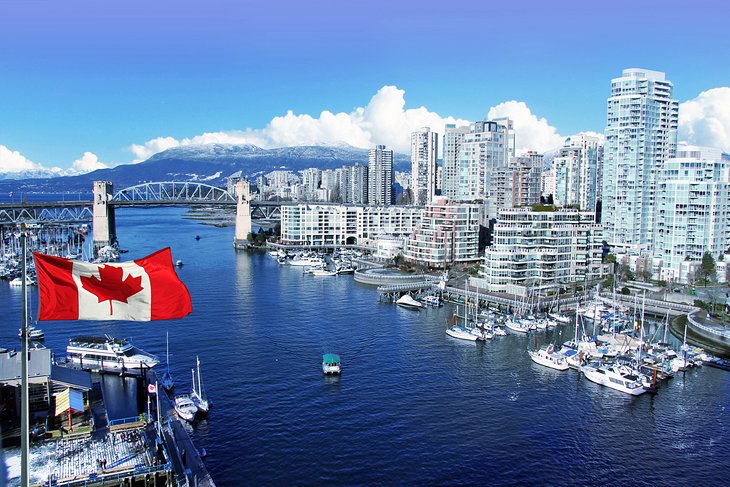 Vancouver
Vancouver
While the rest of the nation is putting on their winter coats and scraping frost off their windows, Vancouverites can be found walking around on the Sea Wall. Eating lunch on a sun-drenched patio, or perhaps playing golf (seriously, the golf course is available all year round).
The average daily temperature during January Vancouver can be as high as 6.9 inches Celsius (44 degrees Fahrenheit). The average daily low is that is 1.4 degree Celsius (34.5 degrees Fahrenheit). The weather isn’t Florida or Hawaii. However, it’s warm enough to take advantage of being outdoors. It’s also not uncommon to enjoy a few pleasant and sunny days during wintertime in Vancouver. It’s as if you get a sneak peek of spring.
You might also be interested in: How to Apply for General Laborer Jobs In Canada
Although you’re not likely to experience snow at any time in Vancouver, the odds are that you’ll likely encounter some of the notorious Vancouver rain if you go there in winter. Bring an umbrella or rain jacket, and don’t let the wet weather stop you from taking advantage of the city.
Accommodation: Where to Stay in Vancouver: Best Areas & Hotels
- Read More: Top-Rated Tourist Attractions in Vancouver
3. St. Catharines, Ontario
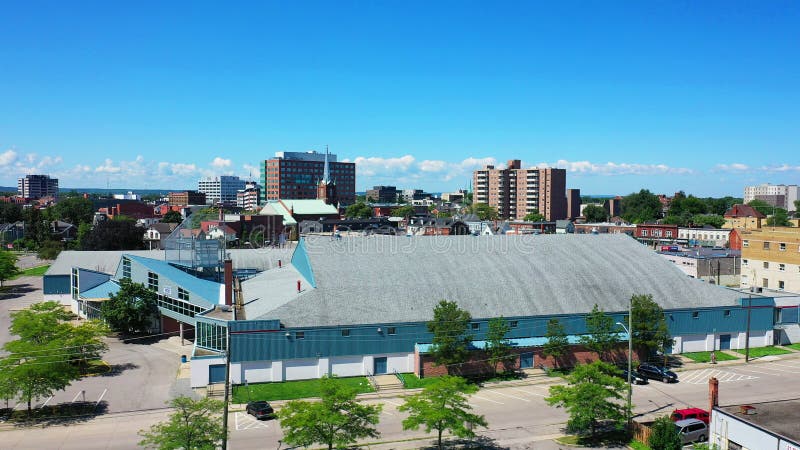 Sunset in St. Catharines, Ontario
Sunset in St. Catharines, Ontario
We’re sure you’re thinking: What’s the city of Ontario making it onto a list of Canada’s warmest places in winter?
This isn’t an error. St. Catharines, a charming city in Ontario’s Niagara Region, is an excellent location due to its proximity to Lake Ontario and Lake Erie and the protection offered through the Niagara Escarpment. It’s the result: A microclimate that keeps the city reasonably warm even in winter.
St. Catharines is warmer than other cities within Ontario (although Sarnia is slightly warmer than St. Catharines), it is still quite cold in winter deep. But, the temperatures are moderate earlier and later during the winter months during November; the average daily temperature of the day is 8.4 inches Celsius (47.1 degrees Fahrenheit). It’s nearly as warm in March, where the average daily temperature of the day is 7.4 inches Celsius (45.3 Celsius).
4. Kelowna, British Columbia
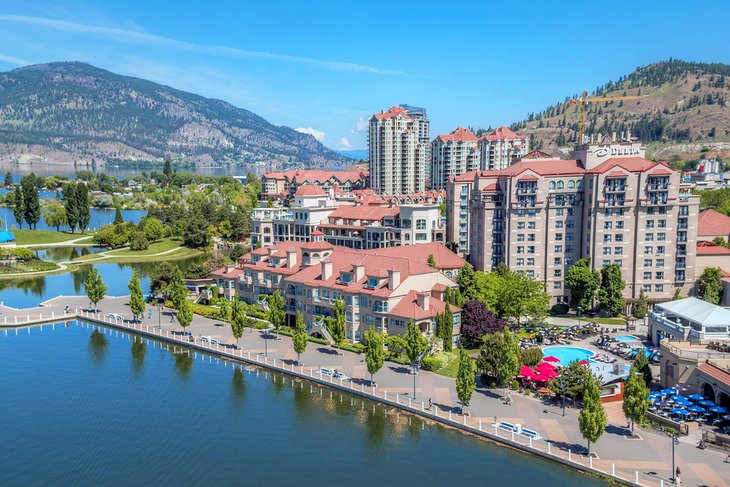 View from the air of Kelowna along with Okanagan Lake
View from the air of Kelowna along with Okanagan Lake
If you’re looking to stay warm but do not want to get stuck in the rain, look at Kelowna, British Columbia.
In the summer, this is a trendy spot for those who travel – the climate is scorching hot, as is the water, which is ideal for any water-related activity. Although you’re unlikely to waterski in the winter months, there are many reasons to go to Kelowna along with Kelowna and the Okanagan Region in winters, such as winter hiking, a relaxing day in The Spa, or even a dining experience at a famous restaurant.
you might also interested in: How much do you need to immigrate to Canada
The most significant benefit of escaping the winter months here is that you can visit it whenever you need to enjoy a dose of winter fun and snow. Kelowna is only a short drive away from several of British Columbia’s top ski resorts, So make sure you bring your ski equipment.
Accommodation: Where to Stay in Kelowna: Best Areas & Hotels
5. Halifax, Nova Scotia
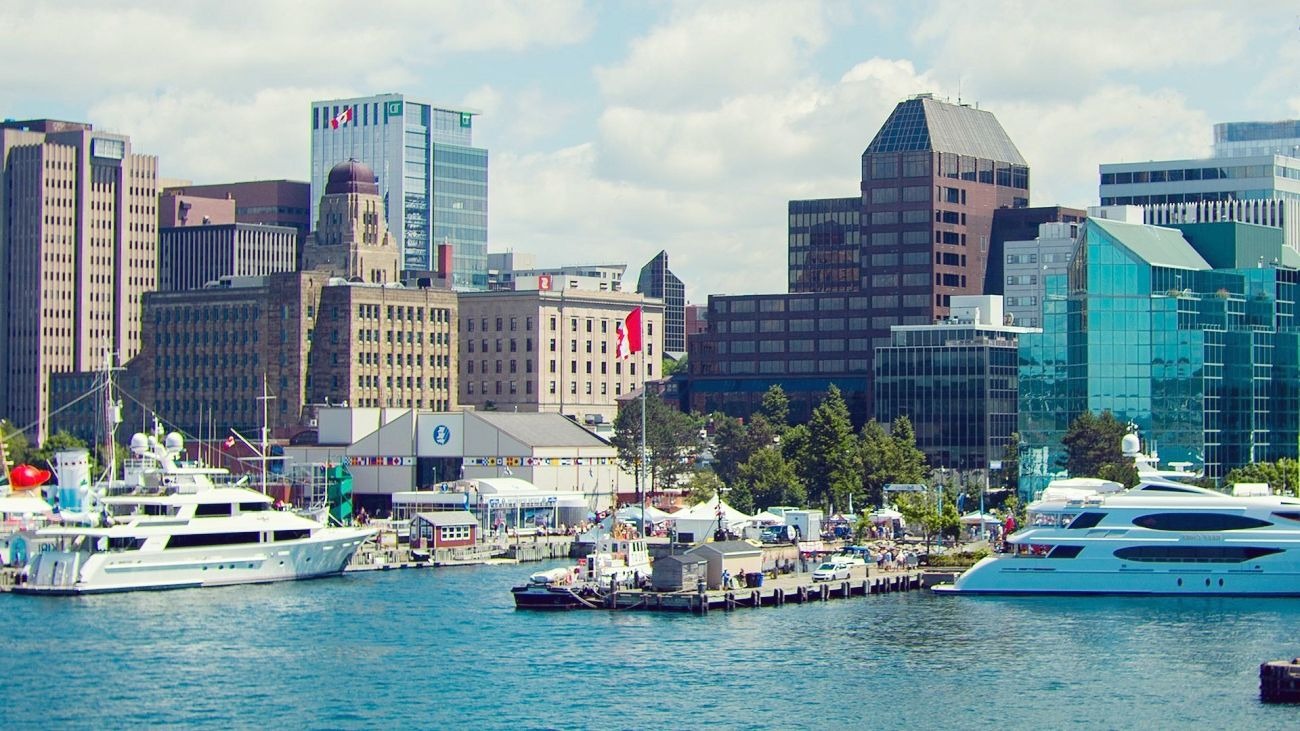 Peggy’s Cove Lighthouse at sunset in Halifax
Peggy’s Cove Lighthouse at sunset in Halifax
If you’ve had your sights visiting Canada’s gorgeous East Coast in the winter, the most pleasant city to visit is Halifax, the capital of Nova Scotia. Its located on the shores of the Atlantic; Halifax experiences milder winters than the province’s other inland cities and towns.
The word “mild” is relative here, so be aware that you’re likely to experience a good amount of snow if in Halifax in winter. There are plenty of ways to enjoy the fluffy white stuff, from snowshoeing and cross-country skis to snowshoeing and tobogganing on Citadel Hill.
If you’d prefer to avoid the frigid winter air, find details about the rich past in Nova Scotia at the Canadian Museum of Immigration or the Maritime Museum of the Atlantic. If you’re looking for a dose of cultural excitement, visit the Art Gallery of Nova Scotia. Are you looking to discover more about the stars or the universe of science? Visit Discovery Centre. Discovery Centre.
Another benefit of visiting Halifax in winter is that the tourist attractions are much less crowded than during the busy summer months. You can avoid not only lines but also get some great offers on travel.
You might also be interested in: Easiest Ways to Apply for Teaching job in Canada
6. Courtenay, British Columbia
 Seal Bay Nature Park, Courtenay
Seal Bay Nature Park, Courtenay
There is a lot you know about Victoria as among the well-known top places to visit in Canada However, have you heard of Courtenay? It is located further up on the east side of Vancouver Island; this smaller city ( population: approximately 26,000) is thought by many to be an undiscovered gem on the island.
Mild winters are only one of the many advantages Courtenay can offer. The average daily temperature for January was 6.4 degree Celsius (43.5 degrees Fahrenheit), with daily average temperatures of 1.4 inches Celsius (34.5 degrees Fahrenheit).
You might also be interested in: Highest paying Jobs in Canada
One of the advantages that winter brings to Courtenay is that you get to participate in traditional Canadian winter sports, such as snowboarding, downhill skiing, and cross-country skiing, on Mount Washington, which is only one hour’s drive away.
Once you’ve satisfied the desire for winter, you’ll be able to get away from the cold and come to Courtenay maybe to take in the winter market indoors, or perhaps one of many golf courses open all year round.
7. Sunshine Coast, British Columbia
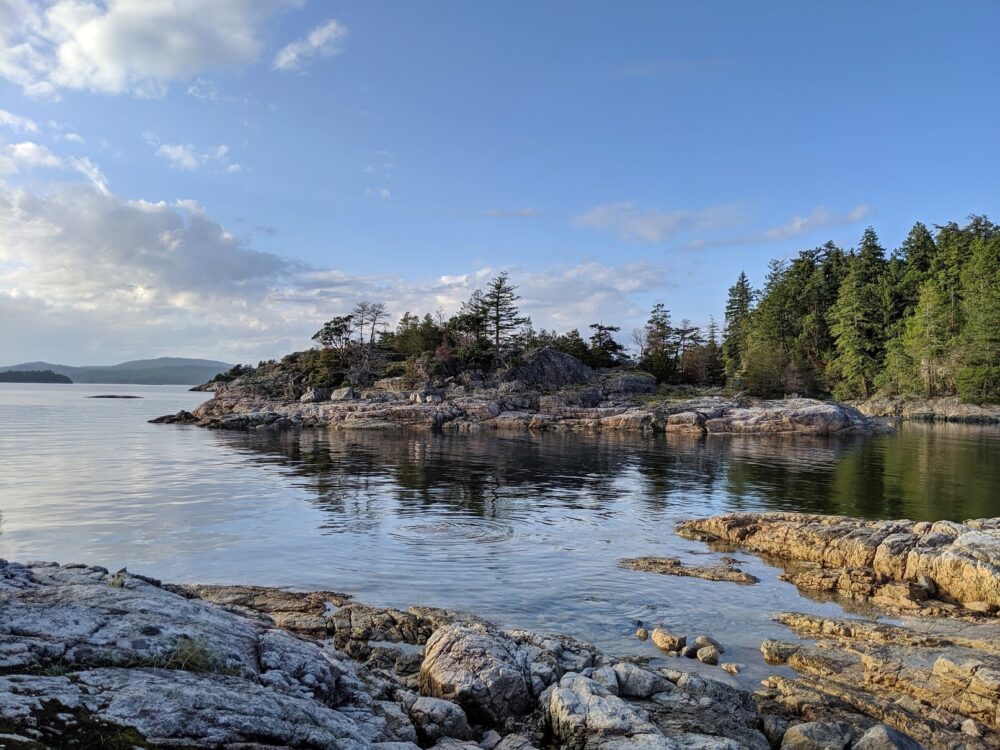 Sunset on the Sunshine Coast
Sunset on the Sunshine Coast
With a name such as the Sunshine Coast, it’s easy to see the attraction of this part of the southern part of British Columbia. It is a massive part of the Pacific Ocean, and the Sunshine Coast is accessible only via ferry, even though it’s technically connected to the mainland. It is home to various charming and cozy seaside towns with adorable shops, casual cafés, and restaurants that offer stunning views.
The communities that make up the Sunshine Coast are the kind you’d find in the upcoming Hallmark Christmas movie, with only the snow mounds and snow. The temperature remains relatively hot (for Canada) in the winter months, and while the region doesn’t see many snowfalls, it does get quite a bit of rain during winter.
If you’re not scared of some rain, you’ll love spending your time exploring trails, looking for waterfalls, or walking along the beach. In the evening, you can curl up in front of the fire or relax in the hot tub. It’s a great place to relax. Sunshine Coast has all winter comforts but without the harsh weather.
- Learn More about The Best Weekend Escapes From Vancouver, BC
8. White Rock, British Columbia
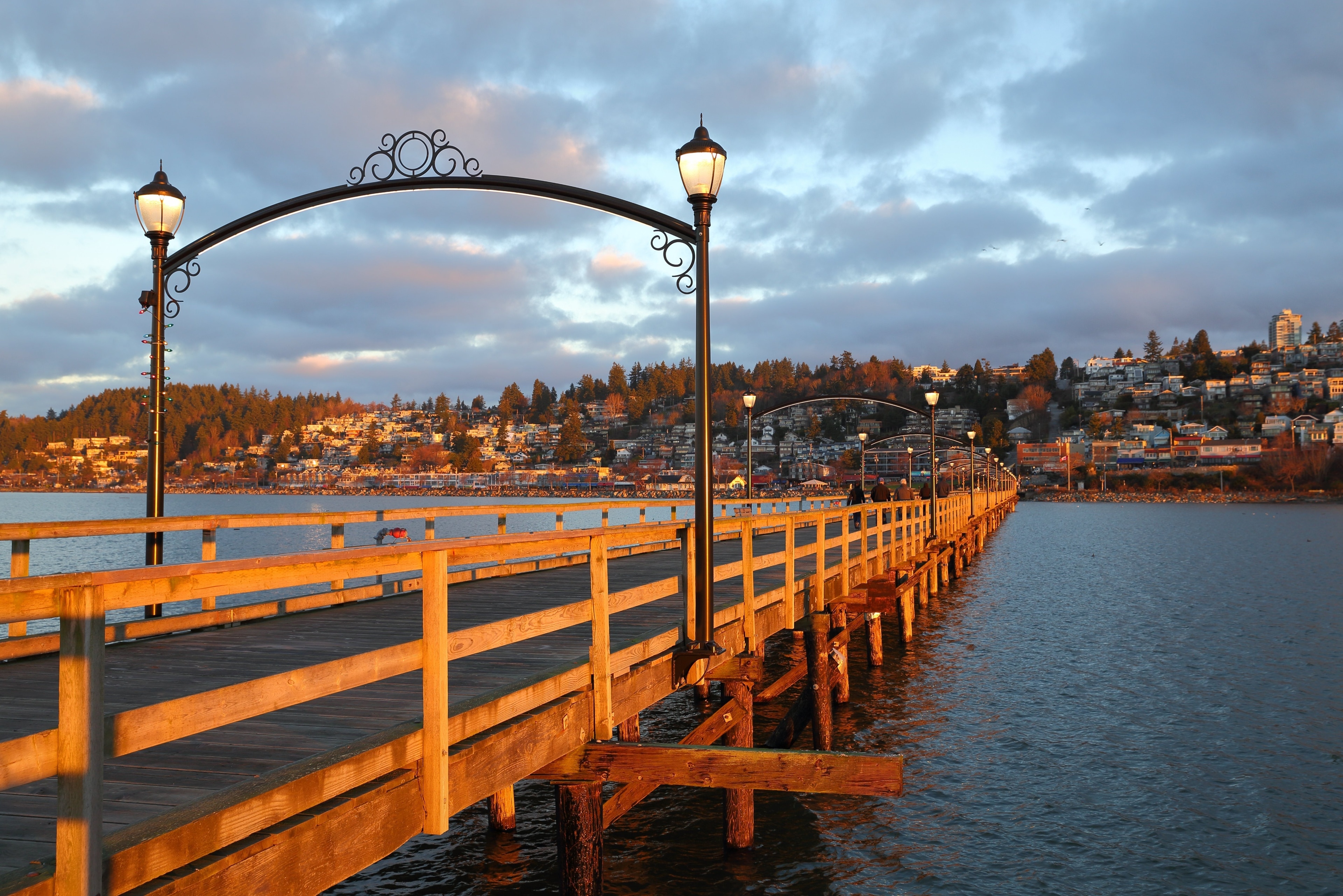 White Rock, BC
White Rock, BC
Take Vancouver, subtract a little of the rain, and then add some degree to your temperature. The result is White Rock!
On the South side of Vancouver and close to that US boundary, White Rock is a tiny city that borders Semiahmoo Bay in the Pacific Ocean. It is a bit further from the Coast Mountains, which is why it experiences less rain and has 20 percent more sun than Vancouver.
If you’re in Vancouver during winter and need an escape from the grey skies and gloomy weather, Keep an eye on the forecast for White Rock. If the forecast calls for a bright and sunny day, take the hour-long drive to the south and take a break in the sun. Begin by visiting White Rock Pier. White Rock Pier and walk along the beach along the White Rock Promenade. Then, lunch at one of the numerous eateries that overlook the ocean before returning to Vancouver.
White Rock is the perfect method to get the necessary amount of Vitamin D during winter.
9. Kamloops, British Columbia
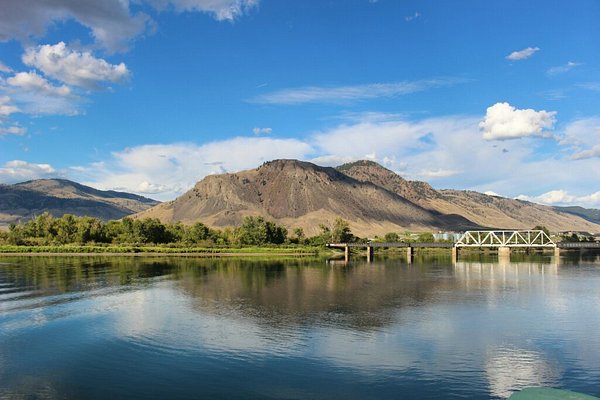 Kamloops Kamloops Lake in the winter
Kamloops Kamloops Lake in the winter
It’s something on a sun-drenched day in the winter that makes the cold sensation a bit more bearable. The province’s second-highest sunniest city, Kamloops, experiences plenty of sunny days, even during the dead of winter. If you’re looking to escape perpetual rain or snow storms, Kamloops might be the right place for you.
Its city, Kamloops, is situated in a valley between mountains. The valley is where it’s generally relatively moderate (by Canadian standards – you’ll nonetheless experience sub-zero temperatures throughout the winter, which means this isn’t exactly a tropical getaway sort of place). Higher up in mountain areas, things are more relaxed and snowy – ideal for enjoying the best of Canada’s snow activities.
There’s no need to go far to enjoy the thrill of snowboarding, skiing, or snowshoeing. However, should you prefer to stay in the shade, There are plenty of ways to be entertained indoors. Try your hand at physical fitness by climbing indoors at the trampoline park in the gym or exercise your brain by attempting to solve an escape game. You’ll be so engaged that you’ll barely be aware of external conditions.
10. Sooke, British Columbia
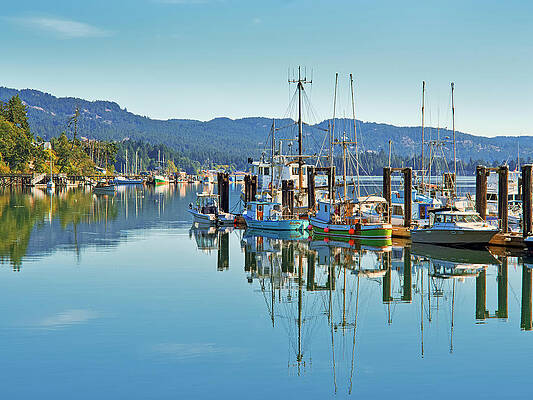
Swimming in January at Iron Mine Bay in East Sooke | Photo Copyright: Lana Law
Surrounded by the rugged and remote West coastline of Vancouver Island, Sooke is an excellent small town that is perfect for those who want to live an active lifestyle in the outdoors but still looking for a wide range of dining options and services.
In the shadow of an island that protects it from the most severe storms coming from the Juan de Fuca Strait, this tiny town is the ideal combination of the perfect escape from winter and an escape from the hustle and bustle of city life. With an average temperature of 7 degrees Celsius (44.6 °F), It’s only half a degree colder than Victoria.
You’ll see a variety of people who live here. People come from every walk of life. However, they’re generally quite friendly.
Sooke after a snowy day in December. Photograph Copyright Lana Law
Enormous trees also surround it. Under the canopy of protection lies the best of Vancouver Island’s finest hiking. Nearby beaches are also great for strolling, picnicking, and exploring the ocean. If you’re looking to ride there, you can take the Galloping Goose Trail, a great option that runs from Sooke to Victoria, and various mountain biking trails are available within the region.
Even though Sooke is a small town with a population of 13,000, It is accessible to great eateries. There’s nothing better than walking in the cool sea air during a summer day on Whiffen Spit and then digging into a huge Mountain Burger in West Coast Grill. West Coast Grill to replenish your energy.
If you sense the forest is closing over you and craving some big city lights and excitement, downtown Victoria is just a 45-minute drive from the hotel.
